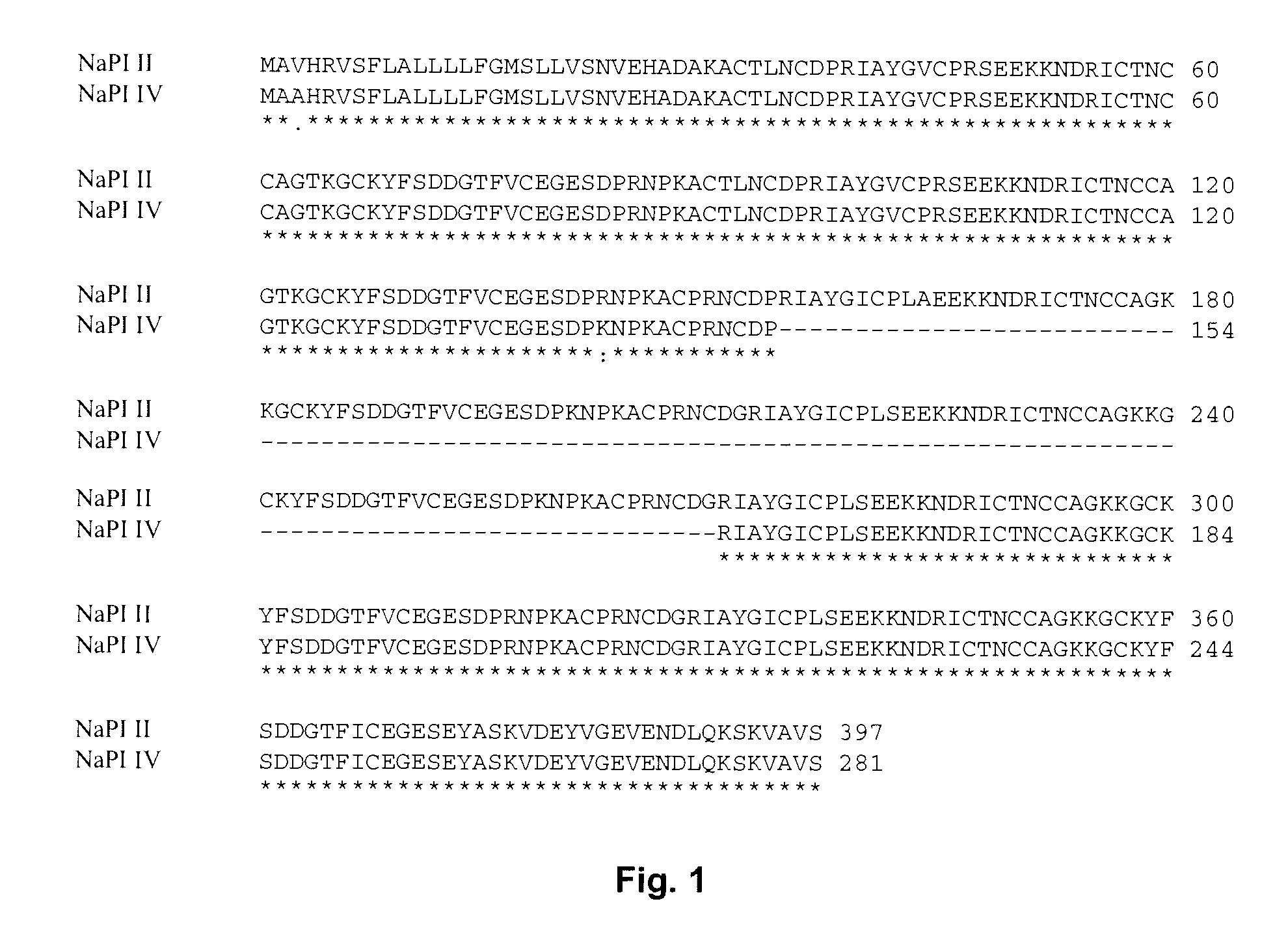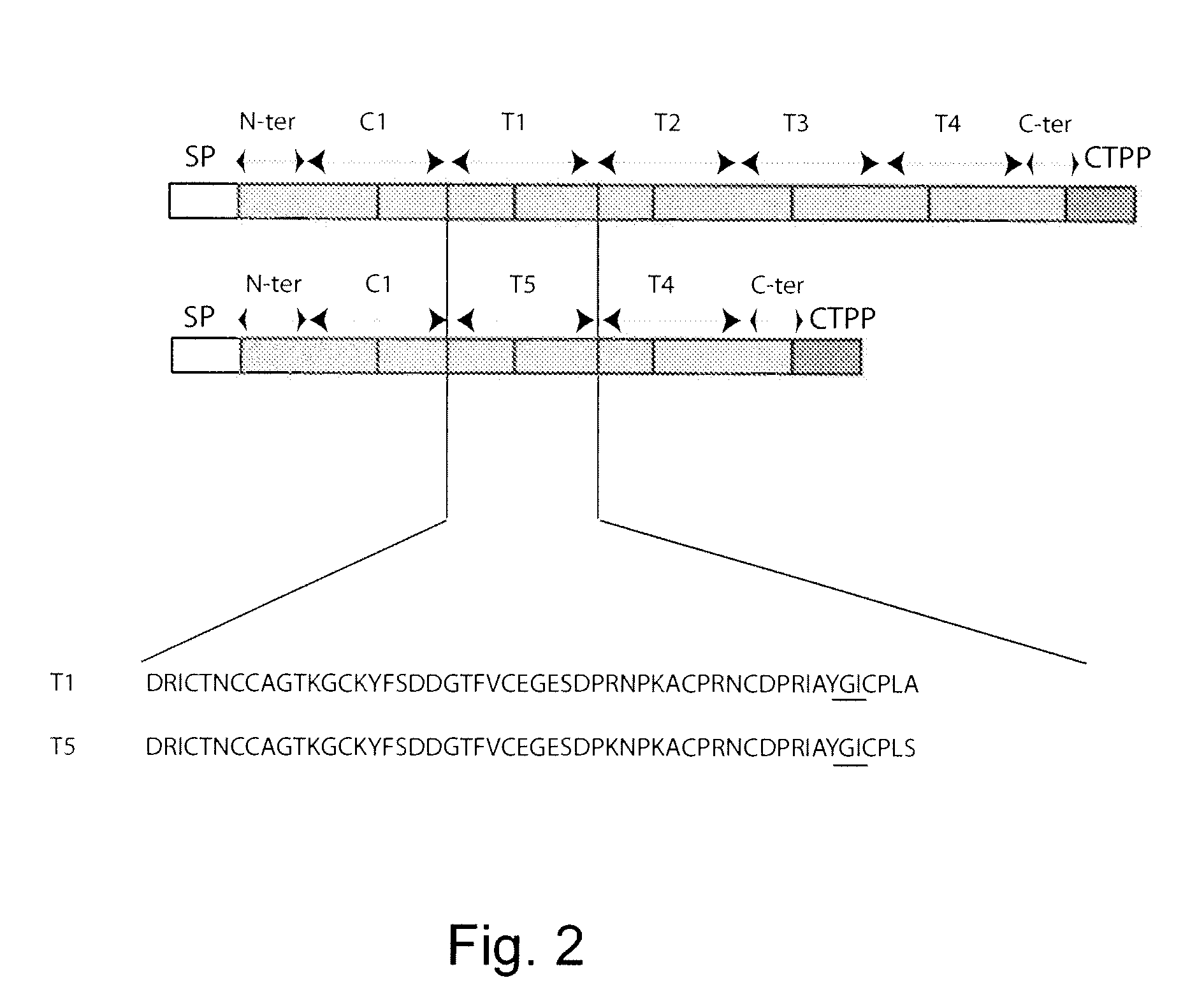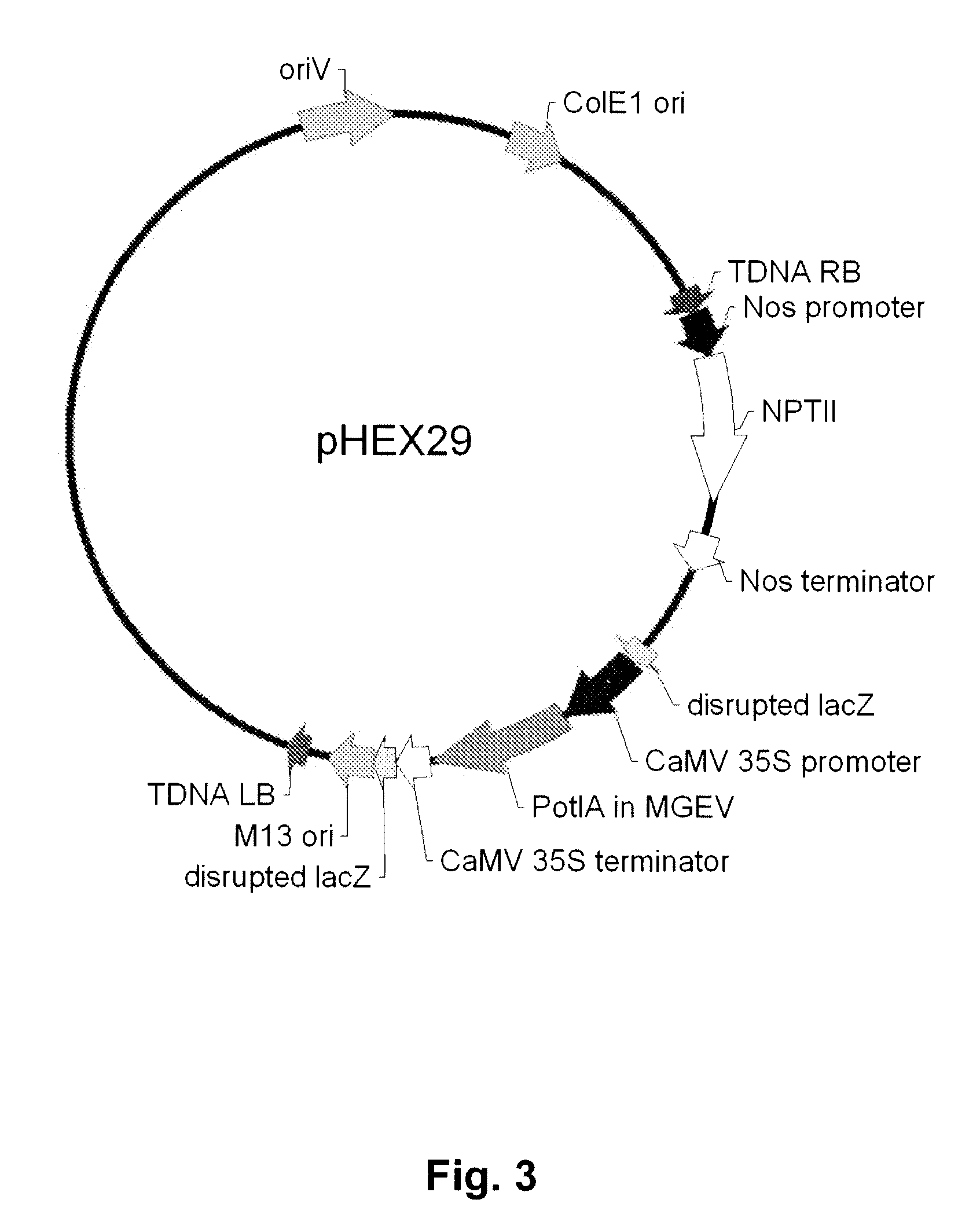Multi-gene expression vehicle
a multi-gene, vehicle technology, applied in the direction of endopeptidase, peptides, enzymology, etc., can solve the problems of inapplicability to vegetatively propagated plants, complex breeding process, and limited practical value of sequential single gene transformation
- Summary
- Abstract
- Description
- Claims
- Application Information
AI Technical Summary
Benefits of technology
Problems solved by technology
Method used
Image
Examples
example 1
Construction and Expression of an MGEV having One Type One PI and 3 Potato Type Two PI's
[0101] The MGEV described in this example (MGEV-5) SEQ ID NO:6 has the structure diagrammed as:
S-C2N-L1D1-L2D2-L3D3-L4-C2C-V;
wherein L1-4 encodes the linker amino acid sequence -EEKKN—SEQ ID NO:5, D1 encodes a potato type two trypsin inhibitor, T1 SEQ ID NO:3; SEQ ID NO:1 amino acids 112-164; D2 encodes a potato type one chymotrypsin inhibitor, potato Pot 1A SEQ ID NO:11, (also SEQ ID NO:5, bases 352-376); D3 encodes a Type Two chymotrypsin inhibitor, C1 SEQ ID NO:2 amino acids 54-106; C2N SEQ ID NO:1 amino acids 31-48 and C2C SEQ ID NO:1 amino acids 344-373 encode peptides that interact with each other to form a heterodimer C2 stabilized by disulfide crosslinks, the cross-linked protein having potato type two chymotrypsin inhibitor activity. S encodes a signal peptide and V encodes a vacuole translocation peptide.
[0102] Amino acid sequences encoded by the above-identified segments are descr...
example 2
Construction and Expression of a Linear MGEV Having One Type One PI and 2 Potato Type Two PIs
[0137] The MGEV described in this example (MGEV-8) has the structure diagrammed as:
S-D1L1D2L2D3L3-V [0138] where D1 is T1 of NaPI-ii—SEQ ID NO:2, aa 112-164 [0139] D2 is potato Pot 1A—SEQ ID NO:11 [0140] D3 is C1 or amino acids 200 to 252 of SEQ ID NO:2 [0141] L1 and L2 and L3 are each EEKKN (SEQ ID NO:5) [0142] S is the signal peptide of NaPI-iv—SEQ ID NO:2, aa 1-29 [0143] and V is the vacuole targeting peptide of NaPI-iv—SEQ ID NO:2, aa 258-281
A linear MGEV (MGEV-8) (FIG. 6A) was constructed as follows. The signal sequence of NaPI-iv SEQ ID NO:2, aa 1-29 was PCR-amplified with a Bam H1 site at the 5′ end and a Xho 1 site at the 3′ end. The vacuole targeting peptide of NaPI-iv was PCR-amplified with a Xho 1 site at the 5′ end and a Sal 1 site at the 3′ end. These DNA fragments were ligated together into pAM9 cut with Bam H1 and Sal 1 (see Example 1).
[0144] The Xho 1-flanked T1-Xba 1-C1...
example 3
Construction and Expression of an MGEV Having One Defensin and 3 Potato Type Two PIs
Note: In Examples 3-16, linker peptides (L) are omitted from the MGEV diagram in order to simplify the diagram.
[0150] The MGEV described in this example (MGEV-6) has the structure diagrammed as:
(See also FIG. 8A).
[0151] MGEV-6, expressing a defensin and 3 potato type two PI's, was constructed essentially as described for MGEV-5 (Example 1) except that a modified multipurpose vector (pRR20) was used and a defensin coding sequence was inserted instead of Pot 1A. The defensin was NaD1 as described in U.S. Pat. No. 7,041,877, and herein SEQ ID NO:14, amino acids 26-72, having a mature defensin domain but lacking the C-terminal acidic peptide tail, and without the N-terminal signal peptide.
[0152] The modified multipurpose vector (pRR20) is the same as the multipurpose vector (pRR19) described in Example 1, except that the codon encoding N in the EEKKN linker (SEQ ID NO:5) (L1) of the Xho1-T1-L1-Xb...
PUM
 Login to View More
Login to View More Abstract
Description
Claims
Application Information
 Login to View More
Login to View More - R&D
- Intellectual Property
- Life Sciences
- Materials
- Tech Scout
- Unparalleled Data Quality
- Higher Quality Content
- 60% Fewer Hallucinations
Browse by: Latest US Patents, China's latest patents, Technical Efficacy Thesaurus, Application Domain, Technology Topic, Popular Technical Reports.
© 2025 PatSnap. All rights reserved.Legal|Privacy policy|Modern Slavery Act Transparency Statement|Sitemap|About US| Contact US: help@patsnap.com



